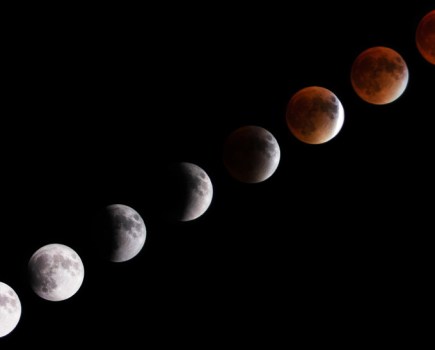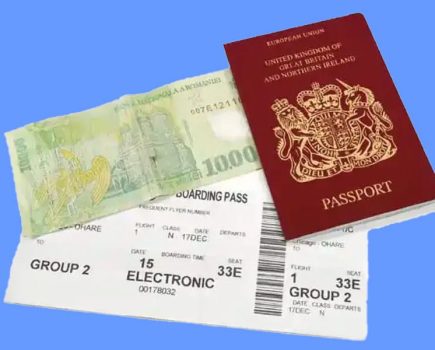You don’t need masses of expensive kit for flower photography. In fact, many of the most useful objects can be found lying around the house or lurking in the garden shed.
The right light for flower photography
Garden and flower photography seems the most inviting when the sun is shining, but it doesn’t really matter whether the sun is out or behind thick clouds provided you shoot in the right way.
Traditionally, overcast conditions are seen as being the best for photographing flowers as the soft, even light avoids strong highlights and deep shadows. However, many delicate petals and leaves look their best when lit from behind by strong sunlight, as it brings their structure and colour to life.
Unless you are shooting trees or large shrubs, you’ll need to get down low to be able to shoot up through the foliage or petals. The results are worth it, though, especially if you go in close with a macro lens.
If the lighting is a little too harsh, use a diffuser to soften the light over your subject and position a reflector or piece of white card to bounce a bit of light back into the shadows.
With a subject that is lit strongly from behind, it may be necessary to switch to centreweighted or spot metering to ensure correct exposure. If you are shooting on film, bracket the exposures, but if you are using a digital camera keep an eye on the histogram view to make sure that the bright light behind the subject isn’t fooling the camera into underexposure.
Although it’s natural to want to record as much of the detail as possible, don’t shoot every shot with a small aperture and lots of depth of field. Opening the iris up can result in much more evocative and romantic images.
Essential Accessories for flower photography

1. Plant spray
A coating of dew makes most flowers look fresh and provides some added sparkle, but it evaporates very quickly at this time of year. However, a quick squirt with a plant spray works wonders.
You don’t have to use a purpose-made plant spray, though, as I used an old shower-cleaner dispenser to bring this tulip to life – just make sure you give the bottle and spray mechanism a good rinse before you use it on any plants.
Try to find a dispenser that produces a fine mist of water rather than a strong jet.
2. Diffuser/reflector
Diffuser
A pop-up diffuser, like those produced by Lastolite (visit www.johnsons-photopia.co.uk or call 01782 753 300), is ideal for softening the light falling on a flower or plant and eliminating those strong shadows and highlights.
Alternatively, a square of thin white fabric, such as a handkerchief, can be pressed into service by pegging it between four canes pushed into the ground around the plant.
It’s also worth keeping your eyes peeled for a white umbrella as these make great diffusers, are self-supporting and can be used as a windbreak to protect a subject. A white translucent studio umbrella that is normally used to modify photographic lights works, but these are comparatively expensive and lack the convenient handle of a standard wet-weather brolly.
Reflector
Although there are purpose-made reflectors on the market, just about any white or reflective surface can be used to bounce a bit of light into the shadows underneath a plant.
A sheet of white paper or card, or a square of polystyrene is ideal as they are easy to transport and light enough to be held in place by a clothes peg or a bulldog clip and wire. Aluminium foil also works well provided that it has been well scrunched up and reflattened before use.
Look through the viewfinder or watch the Live View display as you move the reflector into place. Once the perfect angle is found, clip it into position or use your camera bag to support it.
3. Wire
Just like the clothes pegs and bulldog clips, a couple of metres of garden wire doesn’t take up much room in your camera bag, but you can be eternally grateful for it.
Use the florists’ trick and wrap the wire around a drooping flower to keep it still and pointing in the right direction, or use it to hold back flowers and foliage that you don’t want in the shot. It’s even more versatile when attached to a bulldog clip and can be used for hanging a diffuser from a nearby branch or stake, or holding a reflector at just the right angle.
Opt for green, fairly soft, plastic-coated wire as this is easy to bend into shape and blends into the background.
 4. Background
4. Background
Although the garden may be beautiful, it can sometimes be tricky to find a nice clean background behind the most photogenic blooms. Stems and stalks of other plants and orange-brown fences are particularly problematic.
The easiest solution is to create your own background for flower photography. A small piece of coloured fabric can be draped over any offending objects and won’t damage any plants in the background.
Alternatively, use a print of a suitable background. Simply find a fairly uniform patch of foliage, such as a hedge, set your camera to manual focus, defocus the lens so the leaves are nicely blurred and take the shot. If the image doesn’t look soft enough when you open it on a computer, blur it a bit more using a lens or Gaussian Blur filter (found under Filter>Blur in Photoshop). An A3 print is ideal, but A4 is easier to transport and is suitable for many close-up flower pictures. Use a matt paper for the print as this is less likely to suffer from highlights and reflections when it is used in the garden.

5. Windbreak
 Even the slightest breeze can set a delicate flower nodding and this can be a major problem for flower photography, especially when shooting with a very shallow depth of field.
Even the slightest breeze can set a delicate flower nodding and this can be a major problem for flower photography, especially when shooting with a very shallow depth of field.
However, it’s relatively easy to create a windbreak by simply pushing a few canes into the ground around the subject plant and clipping a length of fabric or polythene to these supports. The canes and windbreak can also provide support for the background if you are using one.
6. Bulldog clips & clothes pegs
These essential items come in handy whenever anything needs holding in place, whether it’s a wayward stem that keeps drifting in front of the lens or a background print on a couple of stakes behind the subject. Keep at least four pegs and clips in your camera bag whenever you head out into the garden.
7. Canes
Bamboo canes and plant stakes are incredibly useful for plant and flower photography. As well as providing support for the main subject to stop it drooping or to help keep it steady in the breeze, they can keep other plants and flowers out of the shot. Canes can also be arranged into a framework to support a background print, a windbreak, a diffuser or a reflector – or all four.








